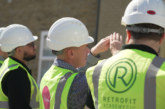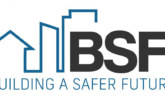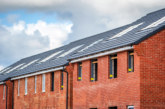Disability Rights UK, Clad Dag and Grenfell United have launched a petition calling on the Government to implement the Grenfell Inquiry recommendation on Personal Emergency Evacuation Plans (PEEPs).
The phase one report of the Grenfell Inquiry recommended that the owner and manager of every residential high-rise should be legally required to prepare Personal Emergency Evacuation Plans for all residents whose ability to self-evacuate may be compromised. Additionally, Dame Judith Hackitt’s independent Building a Safer Future report recognised the need for provisions for disabled and potentially vulnerable people.
In the UK, over 14 million people have a disability. Cognitive and physical impairments are factors that can influence the ability to evacuate a property. In addition, a major fire in a high-rise building does not just put the occupants of a single household in danger but potentially multiple occupants in several dwellings above and below.
Sakina Afrasehabi, who had severe arthritis and walked with a frame, died on the 18th floor in the Grenfell tragedy at the age of 65. She was unable to negotiate steps but was housed in the tower because it had a lift, which stopped working on the night of the fire. Afrasehabi’s family believes she would still be alive if there had been a Personal Emergency Evacuation Plan in place for her.
The newly launched petition requires 10,000 signatures for the Government to respond, and 100,000 to be considered in parliament.
Whilst evacuation plans are critical in the event of tenants needing to leave the building, there are also new, intelligent ways to help mitigate fire risks for the estimated 43% of social housing residents living with a long-term disability, before a 999 call needs to be made.
Using technology to protect residents at risk
Industry experts are using the Internet of Things (IoT) to transform fire safety for those most at risk in our communities. Data monitored in real-time can alert social landlords to the status of alarms in the property including when they are triggered and when they need to be replaced. Being able to combine this information with data on individuals’ physical or mental status is critical. If a person has dementia, is partially sighted or uses a wheelchair, their ability to respond quickly in the event of a fire may be compromised. This data is crucial for providing a higher level of care and protection for the most vulnerable.
FireAngel Connected is a purpose-built cloud solution for fire detection and prevention. Built on 15 years of Internet of Things (IoT) expertise, the built-in FireAngel Predict capability can monitor data over time to highlight trends and inform landlords when they need to check in with their tenants. For example, it can show if a tenant’s alarm is triggered frequently due to electrical appliances overheating, food being left in the oven too long, or other common behaviours consistent with a decline in cognitive abilities.
The network can also send rapid, detailed alerts if it registers heat, smoke, or gas — so even if a tenant is unable to call for help themselves, the fire service can be contacted and dispatched at speed.
Nick Rutter, FireAngel’s Co-founder and Chief Product Officer, commented: “We’re at a stage where technology can shoulder some of the responsibility of fire safety, and housing providers, fire services and regulators can use it to protect tenants and homes more effectively, ensuring that everyone gets the help they need, when they need it.”
“Looking to the future, we need a combination of IoT, robust fire detection and alert systems and evacuation plans to ensure tenants feel safe in their homes and a tragedy like Grenfell never happens again.”









